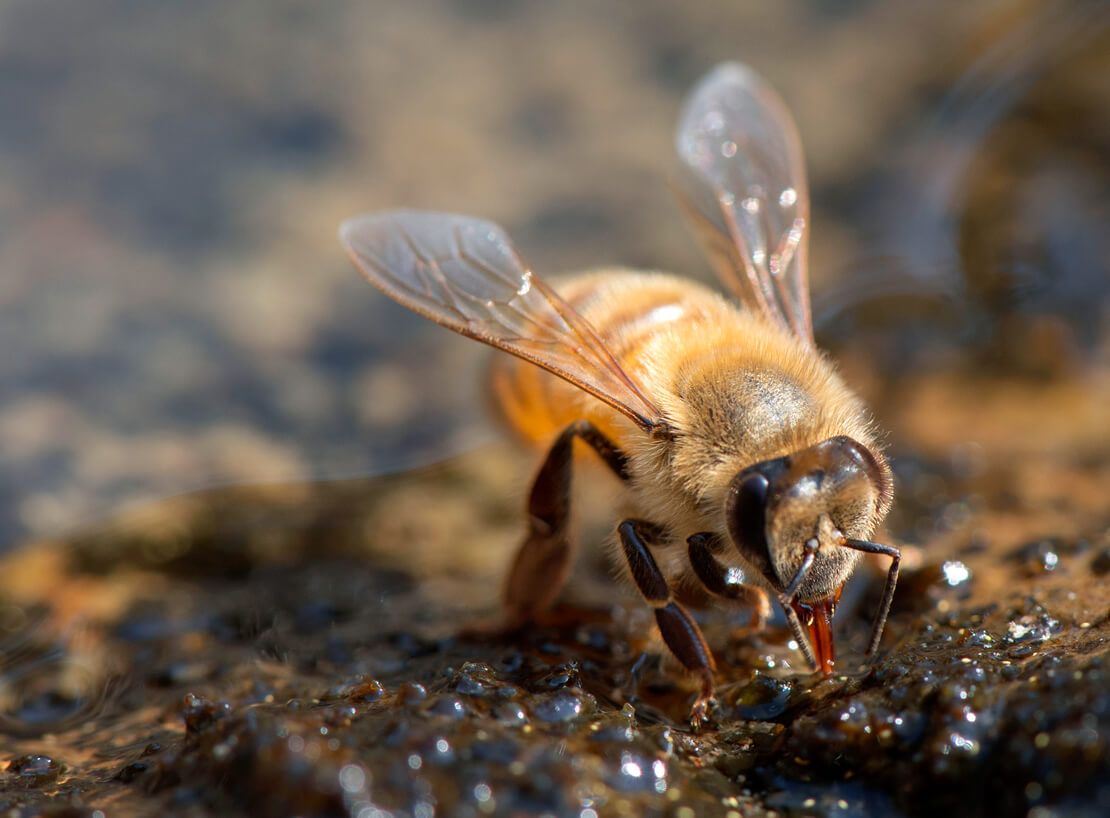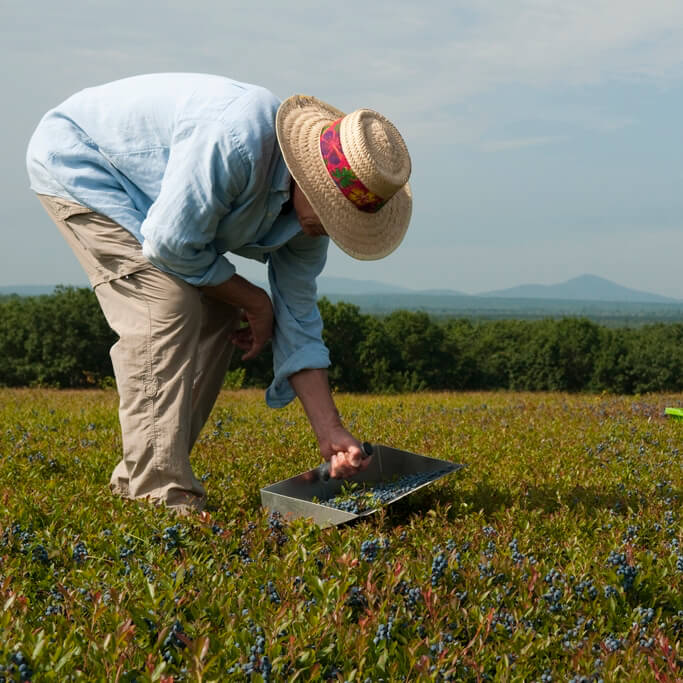This Earth Day, Celebrate Some Encouraging News
If you’re lucky enough to walk onto a Wild Blueberry barren in springtime, the experience will take your breath away. Imagine 38 million tiny pink flowers per acre in bloom; a constant humming of bees, and a beautiful blur of soft honeybees – as many as 300-per minute – coming and going from each beehive.

“It’s an auditory as well as a visual experience,” proclaims Frank Drummond, insect ecologist at the University of Maine and the state’s leading expert on honeybees. With nearly 30 years of honeybee study under his belt, Dr. Drummond has a scholarly knowledge of bees, but his passion for the little winged insect is downright contagious, too.
Recently, we were heartened to learn that Dr. Drummond is optimistic about the state of Maine’s honey bee population. In a recent article in the Bangor Daily News, Drummond stated that the native Maine honeybee appears to be faring better than other pollinators. “I think it’s a very optimistic story,” he told the newspaper. “In general, it seems that most of our native bees are pretty stable and not really in decline.”
The importance of the earth’s honeybee population cannot be overstated, especially here in Maine, where these tiny winged creatures are responsible for pollinating the state’s largest fruit crop—the Wild Blueberry crop. The annual pollination of the barrens is also one of nature’s great miracles.

Here’s a quick primer on the pollination on the Wild Blueberry barrens, in 8 amazing steps.
- Every spring, about mid-May, honeybees arrive on the Wild Blueberry barrens by the millions. Most of the honeybees are now imported from out of state, but there are local pollinators too, and some of the growers like Greg Bridges of Bridges Wild Blueberry Farm, source their honeybees from Swan’s Honey in Albion, Maine. Swan’s has been providing honeybees to Wild Blueberry growers for generations.
- These trucks carry between 50,000-60,000 bees onto the barrens and the hives are delicately transferred at night, when the bees are at home in their hives. The next morning at daybreak, if air temperatures are above 50ºF, the honeybees venture out on an orientation flight.
- Once oriented, the honeybees go at it, working from sunup to sundown. Each bee will visit tens of thousands of flowers in one day. Almost all them are females.
- As these “foragers” visit one flower after another, they drink nectar from the flowers, which they use for their own energy, and travel back to the hive to feed the larvae, which are hatched from the bee eggs laid by a single queen in each hive.
- The queen bee lays an astounding 2,000 eggs per day. And each of those larvae, once hatched from the eggs, needs to be fed.
- This is when the magic begins for the Wild Blueberry plants. As each busy little honeybee visits a flower, she drinks the nectar, gets some pollen on her face, and moves on to another flower. Then she sticks her head into a second flower and smears some pollen onto the sticky stigma of the second flower. This process ensures pollination of the plants.
- Each Wild Blueberry flower holds its own set of precious eggs, about 60 per flower. To ensure pollination, the flower requires 10-12 of its eggs to turn into seeds, and the honeybee is the carrier of the pollen, which allows this magic to happen.
- The pollen goes into the plant’s ovary and fertilizes it. Germination occurs within a few short hours. From there, the Wild Blueberry fruit is formed, and is ready to pick about 8 to 10 weeks later, in late July and August.
The process is stunningly symbiotic. “The honeybee is out for herself and feeding her young,” explains Drummond. “The Wild Blueberry offers its flowers and needs the bee for pollination.” It’s a perfect union, with a nutritious and delicious ending.


